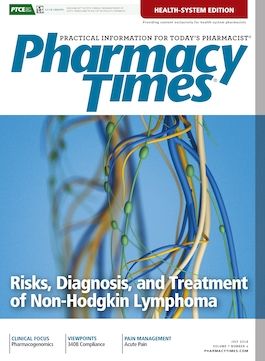USP Chapter : Nonsterile Compounding Pharmacy Air Flow Considerations
USP Chapter 800 presents many challenges for pharmacies and other health care settings, especially compounding pharmacies.
USP Chapter 800 presents many challenges for pharmacies and other health care settings, especially compounding pharmacies. Let’s review air flow requirements for the hazardous drug (HD) compounding area and “powder hoods” in nonsterile compounding of hazardous preparations as defined by the National Institute for Occupational Safety and Health.
Although the requirements are easy to understand and straightforward, accomplishing the requisite specifications can be challenging and requires meticulous guidance and planning, along with significant expense.
There are 2 air flow areas to be considered (see Section 5.3.1, Table 2, Engineering Controls for Nonsterile HD Compounding, in the USP Chapter <800> guidelines). The first is air flow for the hazardous room known as the Compounding Secondary Engineering Control (C-SEC) room. The second is air flow for “powder hoods” or the Compounding Primary Engineering Control (C-PEC) room (see Appendix 3, “Types of Biological Safety Cabinets,” in the USP Chapter <800> guidelines).
There are 4 primary requirements that must be addressed in the C-SEC room:
- Air from the room must be externally vented, meaning that it does not need to be filtered and must go outside.
- The C-SEC must be physically separated from other preparation areas.
- There must be 12 air changes per hour, at a minimum; the air in the room must be replaced 12 times per hour, or 1 air change every 5 minutes. The replacement air may come from adjoining areas of the building or from outside the building.
- The room must have “negative pressure between 0.01 and 0.03 inches of water column relative to adjacent areas.” The rationale is to have net air continuously moving into the hazardous lab. If there is positive pressure inside the C-SEC room, it may be possible for hazardous chemicals to escape into surrounding areas. Measuring air pressure relative to surrounding areas can be accomplished with an inexpensive and simple gauge.
The standards regarding the C-SEC room are direct and, in theory, easy to implement. It is important to be familiar with the standards to be able to ascertain whether proposals meet the requirements. However, finding HVAC contractors familiar with their implementation and the appropriate equipment can pose a challenge. Equipment is available that will move air into and out of the room and provide a constant temperature in the room. At least 1 brand of unit that will meet the requirements exchanges a portion of the energy from the exhaust air to the intake air.
There are several considerations regarding the C-PEC room:
- The powder hood must be in a C-SEC that meets the requirements noted earlier (see Section 5.3.1, paragraph 3, in the USP Chapter <800> guidelines).
- Table 2 in the USP Chapter <800> guidlines notes that the powder hood can be externally vented inside the C-SEC. A single high-efficiency particulate air (HEPA) filter is sufficient if the hood vents outside the building. This is the preferred method of venting the powder hood.
- If the powder hood vents inside the room, 2 redundant HEPA filters in series are required in the powder hood.
- Unpacking of anti-neoplastic HDs and HD active pharmaceutical ingredients must be done in an area that has a negative or neutral pressure relative to surrounding areas (see Section 5.1, Receipt, in the USP Chapter <800> guidelines.)
It is important that pharmacies fully ascertain and understand the requirements contained in USP Chapter 800 prior to implementation to ensure that changes comply with the accepted standards, resulting in increased safety for patients and personnel. USP Chapter 800 primarily focuses on the safety of personnel. Being familiar with the standards will allow pharmacies to meet the standards but also prevent them from unintentionally exceeding the standards, resulting in unnecessary expense.
Douglas C. Higgins, RPh, FIACP, is the owner of Doug’s Compounding Pharmacy in Paxton, Illinois.

